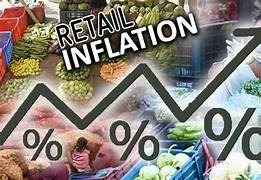A cap that doesn’t fit
Subhasish Mitra (Wide Angle)

Stockholding limits on wheat imposed by the Government recently not only sends out mixed signals, but raises some vital questions on the restriction that was last clamped in August 2006 and withdrawn in March 2009.
But the scenario is quite different this time. The 2006 order, capping the quantity of wheat any trader or processor could stock, was in response to a fall in domestic production and depleted inventories in public warehouses amid spiraling international prices. But, this time around, the Agriculture Ministry has estimated a record 2022-23 crop of 112.7 million tonnes (mt).
Also, government agencies have procured 26.2 mt of grain in the current marketing season. Although below the all-time-high of 43.3 mt in 2021, it’s more than the 18.8 mt bought last year.
The notification issued by the Ministry of Consumer Affairs under the Essential Commodities Act states that the stock limit on wheat will remain in force in all states till March 31, 2024. Under this, a stock limit of 3,000 tonnes of wheat has been fixed for the wholesale traders. A limit of 10 tonnes of wheat has been fixed for retail outlets.
At the same time, for retail chains, a limit of 10 tonnes per outlet and a total of 3000 tonnes has been fixed. Whereas for processors, the limit has been fixed at 75 per cent of the installed capacity or after multiplying the capacity per month for the rest of the year (2023-24) by the remaining period of the year, whichever is less.
This decision of the government has proved that it is very concerned about the prices of wheat. But, what was the need when there has been a record production of wheat in the country this year, which is 50 lakh tonnes more than last year?
Pertinent questions are being raised on the rationale behind the decision. Is the government worried about the southwest monsoon, which has so far registered 52 per cent below-normal rainfall? While the monsoon season extends from June to September, the prospects of rain — and, by extension, for the kharif crops planted during this time — have seemingly been clouded by El Niño already declared by leading global forecasters.
The combined stocks of wheat and rice are comfortable for now, but the fear is probably of a sub-normal monsoon that may result in a not-so-good 2023-24 paddy crop. But isn’t that sounding the alarm bell too soon?
Over the last one year, the Narendra Modi government has banned exports of wheat, broken rice and sugar, besides levying a 20 per cent duty on non-parboiled non-basmati shipments. The stock limits on wheat were preceded by similar restrictions on tur (pigeon-pea) and urad (black gram) holdings by wholesalers, small and big retailers, and dal millers.
These are not ordinary precautionary or preemptive actions. Rather, they convey a single-minded focus not to take any chances with food inflation ahead of national elections in April-May 2024.
At the same time, another matter of concern is the credibility of official production statistics. Because, if Indian farmers have harvested a record wheat crop, why impose stock limits that smack of shortages? Last year, too, the government claimed a bumper production and yet banned exports.